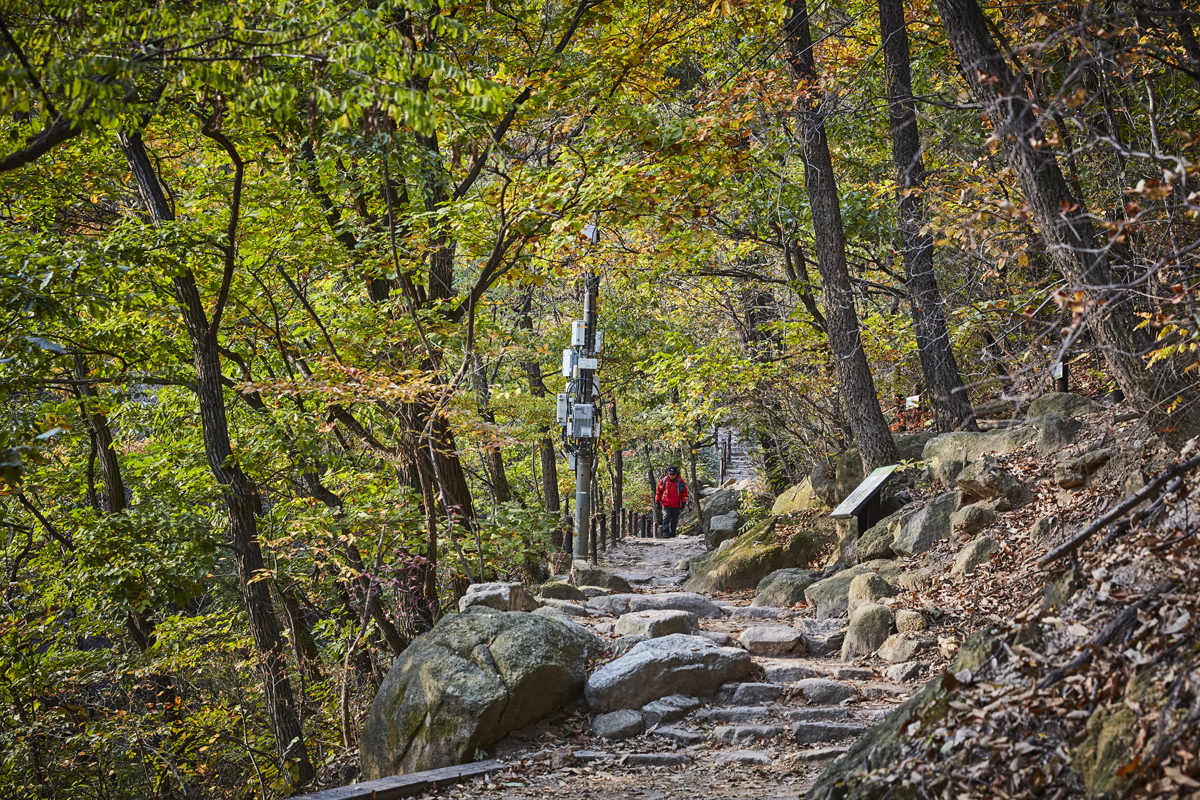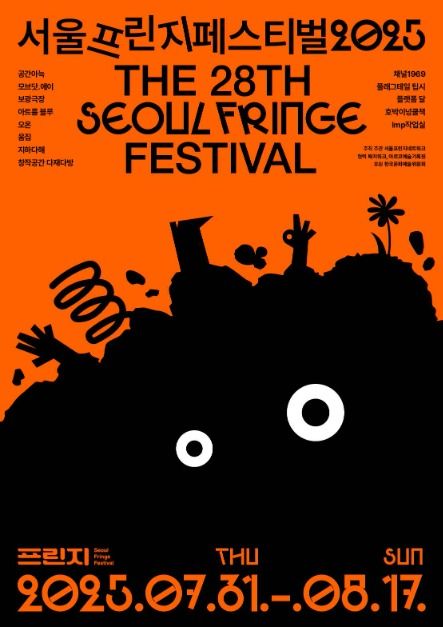World Cup Park (월드컵공원)
9.3Km 2024-10-23
243-60 World Cup-ro, Mapo-gu, Seoul
Opened on May 1st, 2002, the Wolrd Cup Park was once a 15-year-old landfill that held over 92 million tons of garbage. The park is located near Seoul World Cup Stadium, and is made up of five smaller parks - Pyeonghwa (Peace) Park, Haneul (Sky) Park, Noeul (Sunset) Park, Nanjicheon Park, and Nanji Hangang Park.
* Pyeonghwa Park: Closest to Seoul World Cup Stadium, it holds a pond, garden, children’s playground, and forest. As a representative park of World Cup Park, the park was designed in hopes of peace and harmony between mankind and nature. It is often used as a picnic area and place for nature studies.
* Nanji Hangang Park: Nanji Hangang Park was developed on the banks of the Hangang River. In contrast to other Hangang River parks, Nanji Hangang Park is a water-friendly park that has a gradual slope towards the riverbank. The park consists of a camping ground, soccer field, basketball court, grass field, cruise ship port, and an area for nature studies.
* Haneul Park: Haneul Park consists of vast grassland located at the highest elevation of the five parks. The park's pasture is covered with eulalias and wild flowers in their most natural state. In addition, 30,000 butterflies of different species were introduced in 2000 to stabilize the ecosystem. Five wind-powered generators provide power to the park and the park’s maintenance office. Once a mountain of garbage, it is now a green hill with 22 lookout points offering breathtaking views of Seoul, including the N Seoul Tower, Bukhansan Mountain, and Hangang River. Tall trees are line the park to provide shades and serve as resting spots for visitors. As a popular spot to enjoy the sight of eulalias, the park usually remains open until late in the evening during the Eulalia Festival period.
* Noeul Park: In order to prevent the vast area of land of what was once a wasteland from becoming an unnecessary chunk of land, a nine-hole golf course was constructed in what is now known as Noeul Park. The golf course serves as an environment friendly entertainment park to visitors while stabilizing the geographical formation and has an urban park nearby that offers scenic views of the Hangang River and beautiful sunset. Located west of the golf park is Noeul Square, decorated with shrubs and flowers.
* Nanjicheon Park: Nanjicheon Park was developed from the Nanji Stream, which flowed under Haneul Park. It was once overflowing with sewage runoff from a nearby landfill, but it has since been beautifully restored into a park with clear water. The park is built to serve as a recreational spot for those with for youths, elders, and people with disabilities.
Bukhansan National Park (Seoul District) (북한산국립공원(서울))
9.3Km 2024-11-27
262 Bogungmun-ro, Seongbuk-gu, Seoul
+82-2-909-0497
Bukhansan Mountain was officially designated as a national park in 1983. Bukhansan National Park covers both Bukhansan and Dobongsan Mountains, and spans a total area of 80.699 ㎢. At the top of Bukhansan Mountain are Baegundae Terrace (835.6 m), Insubong Peak (810.5 m) and Mangyeongdae Terrace (799.5 m), which gave the mountain the nickname "Samgaksan" or the "three-horned mountain." The mountain had other names: Sambongsan (mountain with three peaks), Hwasan (flower mountain), and Buaak (mountain shaped like a person giving a baby a piggyback ride). The current name, Bukhansan, was given after the Bukhansanseong Fortress was built under King Sukjong of the Joseon dynasty.
Seoul Fringe Festival (서울프린지페스티벌)
9.3Km 2025-07-24
84-3 Seongmisan-ro 13-gil, Mapo-gu, Seoul
+82-2-325-8150
Seoul Fringe Festival has been held every summer annually since 1998. The festival is open to artists of all genres, from dance to music and media art. Due to the open style and non-competitive element of the festival, artists and festival-goers alike are free to express themselves however they choose.
Nepa - Lotte Goyang Terminal Branch [Tax Refund Shop] (네파 롯데고양터미널)
9.4Km 2024-04-23
1036, Jungang-ro, Ilsandong-gu, Goyang-si, Gyeonggi-do
-
Bogner - Lotte Goyang Terminal Branch [Tax Refund Shop] (보그너 롯데고양터미널)
9.4Km 2024-04-19
1036, Jungang-ro, Ilsandong-gu, Goyang-si, Gyeonggi-do
-
Columbia - Lotte Goyang Terminal Branch [Tax Refund Shop] (컬럼비아 롯데고양터미널)
9.4Km 2024-04-22
3F, 1036, Jungang-ro, Ilsandong-gu, Goyang-si, Gyeonggi-do
-
Daehyun Mojo.S.Phine - Lotte Goyang Terminal Branch [Tax Refund Shop] (대현 모조에스핀 롯데고양터미널)
9.4Km 2024-04-19
1036, Jungang-ro, Ilsandong-gu, Goyang-si, Gyeonggi-do
-
SI Vov - Lotte Goyang Terminal Branch [Tax Refund Shop] (SI 보브 롯데고양터미널)
9.4Km 2024-04-22
1036, Jungang-ro, Ilsandong-gu, Goyang-si, Gyeonggi-do
-
Buckaroo - Lotte Goyang Terminal Branch [Tax Refund Shop] (버커루 롯데고양터미널)
9.4Km 2024-04-19
1036, Jungang-ro, Ilsandong-gu, Goyang-si, Gyeonggi-do
-
Misope - Lotte Goyang Terminal Branch [Tax Refund Shop] (미소페 롯데고양터미널)
9.4Km 2024-04-19
Lotte Outlet Goyang Branch, 1036, Jungang-ro, Ilsandong-gu, Goyang-si, Gyeonggi-do
-



![Nepa - Lotte Goyang Terminal Branch [Tax Refund Shop] (네파 롯데고양터미널)](http://tong.visitkorea.or.kr/cms/resource/02/2880702_image2_1.jpg)
![Bogner - Lotte Goyang Terminal Branch [Tax Refund Shop] (보그너 롯데고양터미널)](http://tong.visitkorea.or.kr/cms/resource/03/2880703_image2_1.jpg)
![Columbia - Lotte Goyang Terminal Branch [Tax Refund Shop] (컬럼비아 롯데고양터미널)](http://tong.visitkorea.or.kr/cms/resource/04/2880704_image2_1.jpg)
![Daehyun Mojo.S.Phine - Lotte Goyang Terminal Branch [Tax Refund Shop] (대현 모조에스핀 롯데고양터미널)](http://tong.visitkorea.or.kr/cms/resource/05/2880705_image2_1.jpg)
![SI Vov - Lotte Goyang Terminal Branch [Tax Refund Shop] (SI 보브 롯데고양터미널)](http://tong.visitkorea.or.kr/cms/resource/06/2880706_image2_1.jpg)
![Buckaroo - Lotte Goyang Terminal Branch [Tax Refund Shop] (버커루 롯데고양터미널)](http://tong.visitkorea.or.kr/cms/resource/07/2880707_image2_1.jpg)
![Misope - Lotte Goyang Terminal Branch [Tax Refund Shop] (미소페 롯데고양터미널)](http://tong.visitkorea.or.kr/cms/resource/10/2880710_image2_1.jpg)
 English
English
 한국어
한국어 日本語
日本語 中文(简体)
中文(简体) Deutsch
Deutsch Français
Français Español
Español Русский
Русский